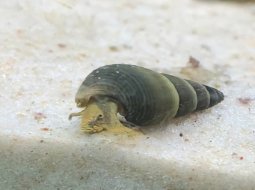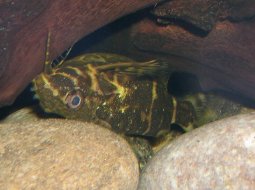
Loading Aqualapp ...
Care and Compatibility of Dwarf Pombos - Pseudotropheus Demasoni
Introduction
The Dwarf Pombos has a compact and oval-shaped body with distinctive electric blue coloration. Both males and females have black stripe patterns throughout their body, making them easily recognizable. Males are usually larger and have more intense colors than females. They can reach sizes of up to 10 centimeters in length.
Behavior
The Dwarf Pombos, also known as Pseudotropheus Demasoni, is a small and lively cichlid fish found in Lake Malawi, Africa. They are known for their vibrant electric blue coloration with black stripes, making them highly attractive in the aquarium. They are territorial and aggressive fish, so it is recommended to keep them in a suitable aquarium with sufficient hiding places and swimming space.
Sexual Dimorphism
Sexual dimorphism in Pseudotropheus demasoni is minimal and difficult to distinguish. Both males and females have a similar appearance, though males may display slightly more intense colors and increased aggression during breeding season.
Reproduction
Breeding the Dwarf Pombos can be challenging and requires specific conditions. It is recommended to keep a group of several females with one male to increase the chances of success. They will build nests in sandy substrate areas, and the females will deposit their eggs there. The males will fertilize the eggs and guard them until they hatch. The fry can be fed with powdered foods and brine shrimp larvae until they are large enough to accept larger foods.
Aquarium Conditions
Pseudotropheus demasoni, commonly known as demasoni cichlid, requires an aquarium with rocks to create structures and caves. It prefers alkaline water and a warm temperature. Aquarium décor should include large rocks and sand substrate. Maintaining water quality is crucial and providing a balanced diet.
Feeding
They are omnivorous fish and accept a variety of foods in their diet. They primarily feed on small live organisms such as crustaceans and insect larvae, as well as algae and plant matter. In the aquarium, they can be offered commercial foods in the form of pellets or flakes, as well as fresh foods such as shrimp, worms, and blanched and crushed vegetables.
Complexity
Caring for Pseudotropheus demasoni can be moderately challenging. They are territorial fish and can be aggressive towards other cichlids. It's recommended to keep them in a larger group or in a African cichlid tank. They are omnivores and accept a variety of foods, but prefer live and frozen foods.
In case you need more help, or if you want to know into any topic related to the Pseudotropheus Demasoni (Dwarf Pombos) and even any other species you can use the forums to ask what you need.
To do an analysis more detailed about coexistence and behavior of Pseudotropheus Demasoni (Dwarf Pombos) use the Aquarium simulation tool, if you do this you can test different ways to combine the Dwarf Pombos with other fishes giving the dimensions and space on you aquarium, on this way you can known the optimal configuration for keep the fishes that you want.
You can also find out the 16 species compatible with the Pseudotropheus Demasoni (Dwarf Pombos) can live together.
Note: The parameters of the water such as PH and temperature are also used to calculate the compatibility of the species.
Compatible species (16)
Compatible (5 Species)
Compatible without any restriction
Aggressive and / or territorial fish can live with fish protected by a shell, since they cannot eat them because of their tough skin or attack them without being injured themselves.
With Reservation (11 Species)
Estos peces son ciclidos africanos del lago Malawi agresivos, por lo general pueden convivir con otros Mbunas agresivos si cuentan con espacio suficiente en el acuario, rocas y escondites donde puedan refugiarse de ser necesario.
Compatible in some cases, it depends on the nature and personality of the fish.
Las especies territoriales por lo general pueden convivir con especies protegidas con coraza, ya que no pueden hacerles daño por su dura piel, lo que si hay que tener en cuenta es tener un acuario con dimensiones favorables para que cada pez pueda delimitar un territorio, ya que la mayoría de peces acorazados son también peces de fondo y les gusta estar buscando lugares donde ocultarse.
Si se quieren mantener varios ejemplares se recomienda mantener un macho por cada 3 o 4 hembras, ademas de tener el acuario con muchos refugios y dimensiones favorables.
Dwarf Pombos
Pseudotropheus Demasoni

- Ph: 7.7 - 8.8
- Temperature (c°): 24 - 26
- Measures: 6 cm - 9cm
- Aquarium Capacity:
63 Liters - 17 Gallons - Alimentación: Omnivores
- Colores: Black, Blue
- Comportamiento: Active, Aggressive, Territorial with its species
- Habitad: African
- Tamaño: Small
- Taxonomía: Cichlids, Fish, Mbunas
- Tipo de Agua: Sweet water, Tropical waters
- Velocidad de nado o movimiento: Normal
- Zona de Nado: Swim in the middle of the aquarium

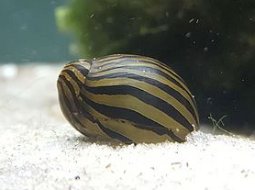
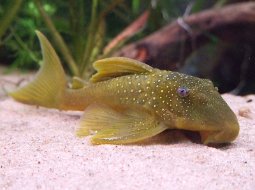
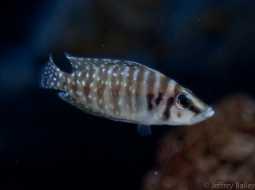
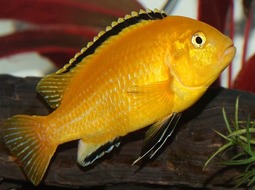
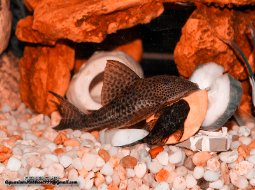
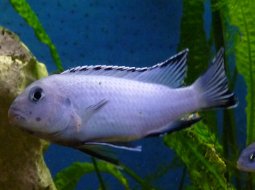
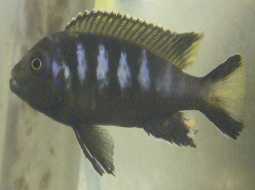
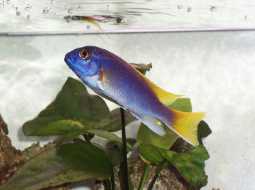
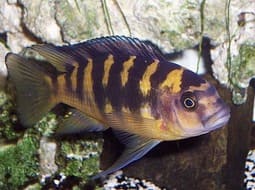
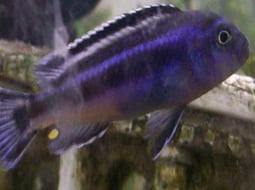
.jpg)
